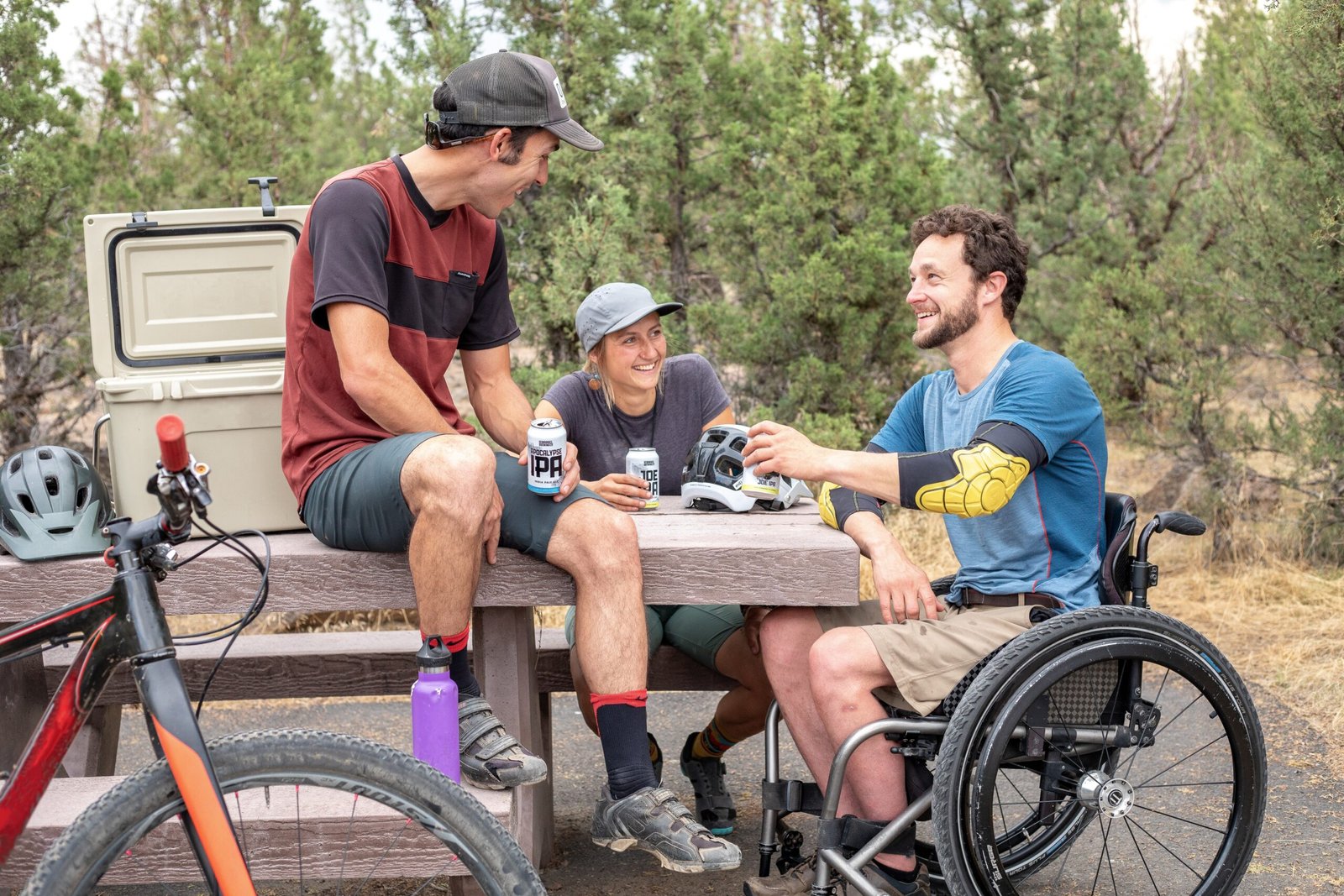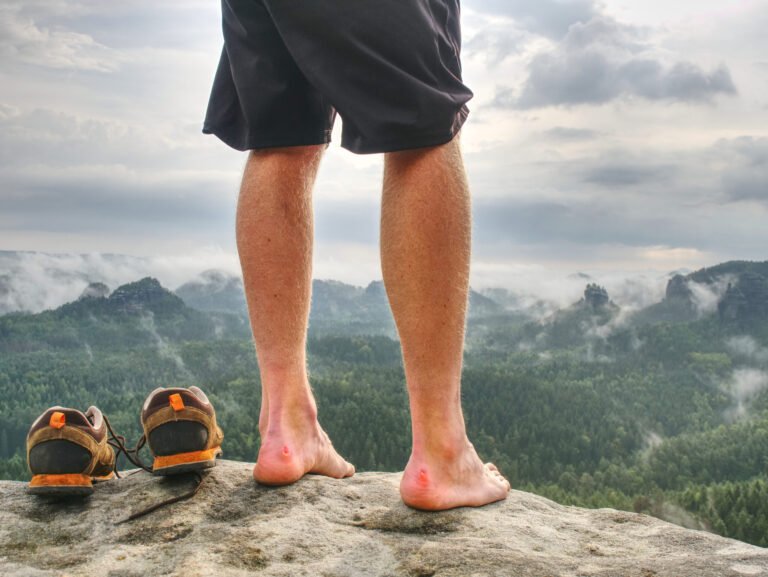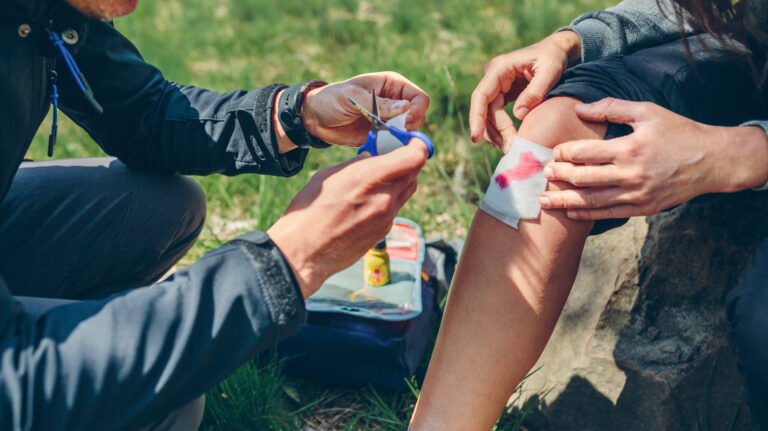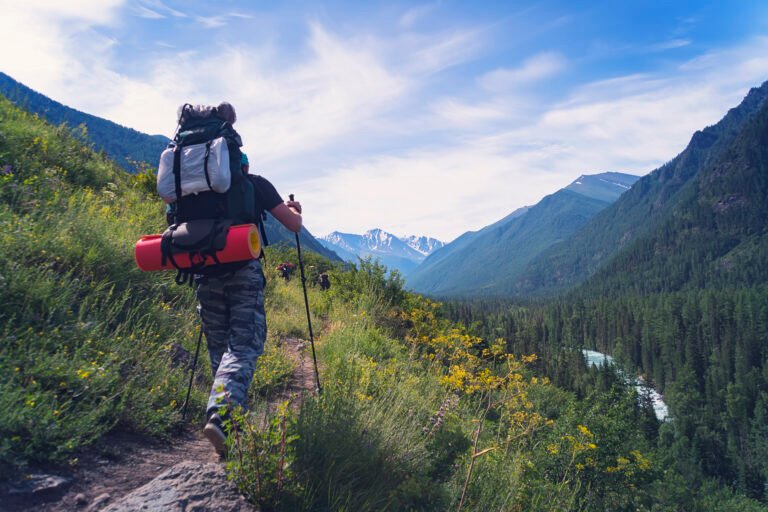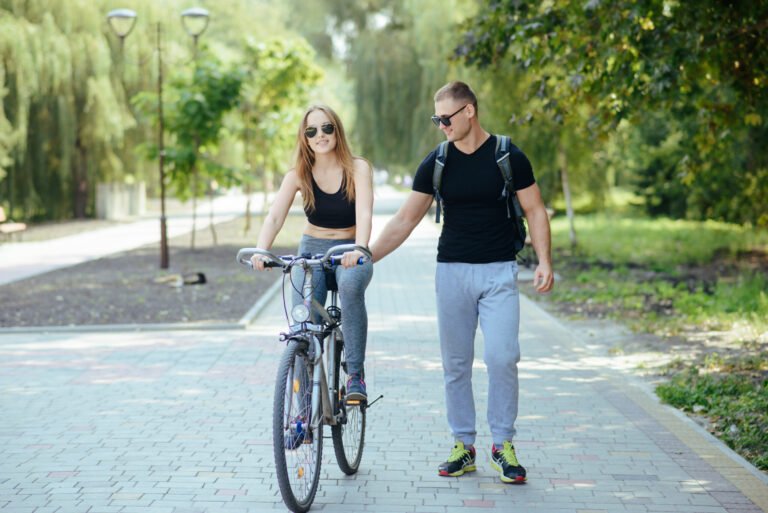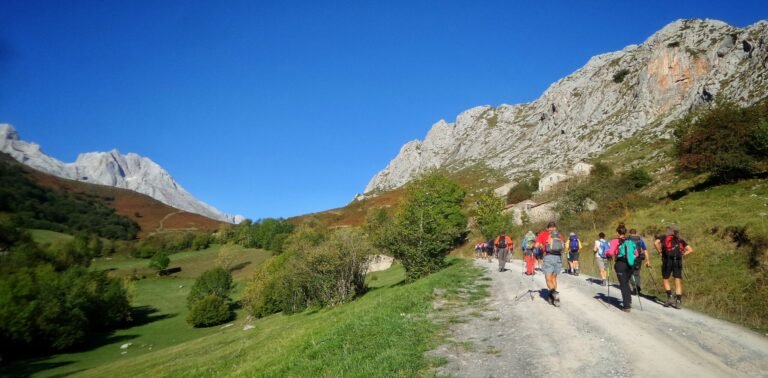Hiking with Disabilities: Adaptive Techniques
Discover adaptive techniques for Hiking with Disabilities. Explore inclusive outdoor recreation tips and strategies for a fulfilling hiking experience.
Over 61 million American adults navigate daily life with disabilities – roughly 1 in 4 people. Indigenous and Black communities experience even higher rates of physical, sensory, and cognitive differences. Yet outdoor spaces often create unnecessary barriers through steep trails, narrow paths, and missing accessibility features. Hiking with Disabilities is a vital topic that deserves attention.
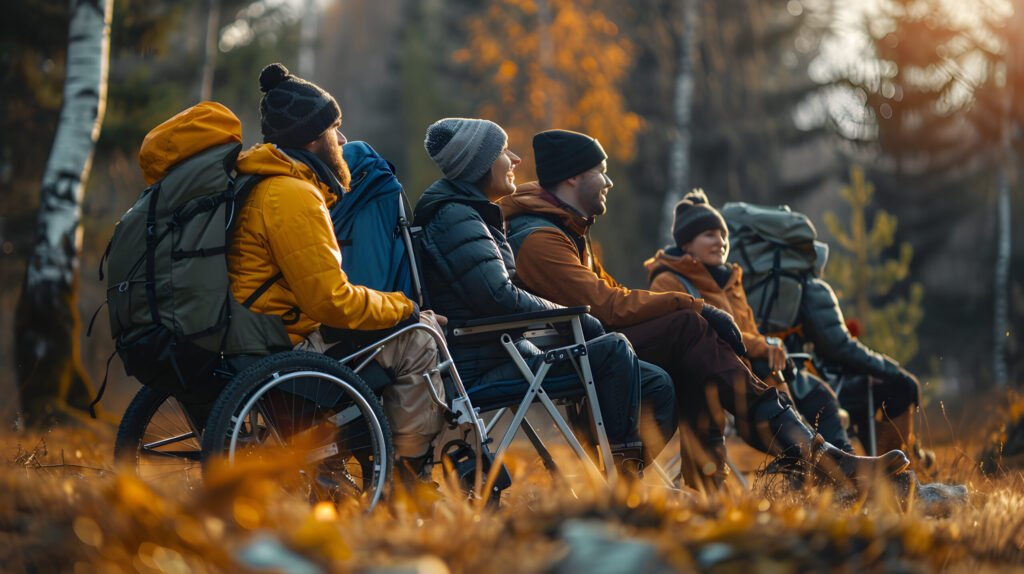
Uneven terrain and lack of ramps aren’t just physical obstacles – they’re symptoms of systemic ableism. Closed captioning gaps on trail videos and unclear signage further exclude those with hearing or vision differences. These challenges suggest nature experiences depend more on accessible design than individual capability.
From wheelchair users to neurodivergent explorers, outdoor enthusiasts require varied support systems. Adaptive approaches transform trails into welcoming spaces for all bodies and minds. When we prioritize inclusion, fresh air and wilderness become truly communal resources.
This article reveals practical solutions bridging the gap between adventure seekers and nature’s wonders. Discover how innovative tools and thoughtful planning create outdoor experiences where everyone belongs.
Embracing Inclusive Outdoor Recreation
Nature belongs to everyone – but accessible design determines who gets to enjoy it. Traditional trail systems often overlook diverse needs, creating barriers that exclude millions. A new wave of outdoor advocates is rewriting these rules through radical inclusion.
Understanding Hiking with Disabilities is crucial for fostering a more inclusive outdoor environment.
Understanding the Importance of Accessibility
Accessible trails benefit more than just wheelchair users. Wider paths help parents with strollers. Smooth surfaces assist older adults. Clear signage aids those with cognitive differences. Groups like Disabled Hikers and Wildability prove better design helps all people connect with nature.
Inclusive Mindset and Community Benefits
True inclusion starts before trail construction. When planners consider mobility aids or sensory needs upfront, parks become welcoming spaces for:
- Neurodivergent explorers
- People managing chronic pain
- Those using assistive technology
Communities grow stronger when outdoors spaces foster connection. Shared nature experiences reduce isolation and improve mental health. As organizations like Unlikely Hikers show, inclusion creates richer adventures for everyone.
Understanding Unique Challenges Faced by People with Disabilities
Accessibility gaps in outdoor spaces create more than inconvenience – they form exclusionary walls. While some barriers appear obvious, others hide in poor planning or outdated assumptions about who ventures into nature.
Navigating Physical and Environmental Barriers
Uneven paths and sudden elevation changes make many trails impassable. Steep inclines without switchbacks force difficult choices for wheelchair users. Narrow passages block mobility aids entirely, turning scenic routes into dead ends.
Informational gaps compound these issues. Trail maps often lack:
- Surface type details
- Rest area locations
- Alternative route options
| Common Barrier | Impact | Inclusive Solution |
|---|---|---|
| Unpaved surfaces | Wheelchair instability | Compacted gravel paths |
| Missing handrails | Safety risks | Dual-height rail systems |
| No audio guides | Excluded experiences | QR code audio tours |
Ableism surfaces when parks label accessible routes as “easy” rather than essential. This language implies capability judgments instead of celebrating diverse exploration methods. Better signage and staff training can shift these perceptions.
Organizations like Trail Access Project now rate paths using detailed accessibility metrics. Their work shows how clear information empowers people to choose adventures matching their needs and abilities.
Adaptive Techniques for Hiking with Disabilities
Trail adventures demand creative solutions when standard approaches fall short. Syren Nagakyrie, founder of Disabled Hikers, transformed inaccessible paths into inclusive experiences through practical innovation. Their journey with Ehlers-Danlos syndrome and POTS sparked a movement redefining outdoor accessibility.
Innovative Approaches and Customized Strategies
Nagakyrie’s toolkit reveals how adaptive techniques empower diverse explorers. Key strategies include:
- Collapsible hiking poles for sudden balance shifts
- Ultralight chairs for impromptu rest stops
- Custom medical kits with temperature-sensitive storage
These methods address fluctuating energy levels and mobility needs. “Assistive devices aren’t limitations – they’re freedom tools,” Nagakyrie notes. Trail veterans often modify pacing, splitting hikes into shorter segments with recovery days.
Personal Journeys Reshaping Outdoor Culture
When Nagakyrie encountered misleading trail descriptions, they built a resource hub detailing surface types and elevation changes. This work helps others avoid dangerous surprises. One hiker shared: “Knowing rest areas exist every half-mile lets me enjoy nature without fear.”
Community-driven adaptations prove universal benefits. Wider paths accommodate strollers and service animals. Clear signage aids everyone navigating unfamiliar terrain. By centering diverse needs, outdoor spaces become richer for all.
Choosing the Right Gear for Accessible Adventures
Smart gear choices transform outdoor access for adventurers managing physical limitations. Lightweight backpacking principles prove particularly powerful, with one explorer reducing their pack from 50+ pounds to under 10 using ultralight techniques. These strategies help people with chronic pain or strength challenges carry only what truly matters.
Lightweight Backpacking Essentials
Modern equipment innovations prioritize both weight reduction and accessibility. Remote canister stoves with wide bases prevent spills for those with hand tremors. Kettles featuring oversized handles improve grip security during pouring tasks.
Essential modifications include:
- Compression sacks for shared medical supplies
- Zippers with pull tabs for arthritic hands
- Multi-use tools that serve 3+ functions
Mobility Support Systems
Hiking poles offer more than stability – they redistribute weight to protect vulnerable joints. Adjustable models accommodate changing terrain needs throughout the day. One hiker with multiple sclerosis credits their carbon fiber poles for enabling mile-long trail segments.
New shock-absorbing designs reduce impact on shoulders and wrists. Pairing poles with wheeled mobility aids creates hybrid systems for varied landscapes. These equipment combinations demonstrate how creative solutions unlock nature’s possibilities.
Balancing Physical Limitations with the Love of Nature
Nature’s healing power doesn’t require peak physical performance. Explorers managing chronic conditions redefine outdoor success through flexible approaches that honor their body’s needs. This shift transforms limitations into invitations for creative connection with wild spaces.
Managing Chronic Pain and Fatigue on the Trail
Seasoned adventurers with conditions like multiple sclerosis emphasize strategic pacing over distance goals. One hiker with Ehlers-Danlos syndrome shares: “My trail map shows rest benches, not summit markers.” Effective energy management often involves:
- Pre-planning routes with multiple exit points
- Scheduling recovery days between outings
- Using weather apps to avoid symptom-triggering conditions
Pain flare-ups demand real-time adjustments. Many carry compact positioning aids – inflatable cushions for rocky terrain or compression sleeves for joint support. Medication timers synced to fitness trackers help maintain dosing schedules during longer excursions.
Fatigue management proves crucial for sustaining outdoor habits. Some adventurers use “micro-hiking” techniques – 15-minute walks with extended nature observation periods. Others partner with trail buddies who understand fluctuating energy levels, creating safety nets for unexpected symptom changes.
These adaptive methods demonstrate how listening to one’s body unlocks sustainable nature access. As disability advocates remind us: “Completion isn’t the measure – presence is.” Through thoughtful preparation, even brief outdoor moments become powerful acts of self-care and connection.
Planning Accessible Trails and Itineraries
Smart trail planning transforms outdoor adventures from stressful to sustainable. Detailed research helps explorers match routes to their unique needs while avoiding unexpected barriers.
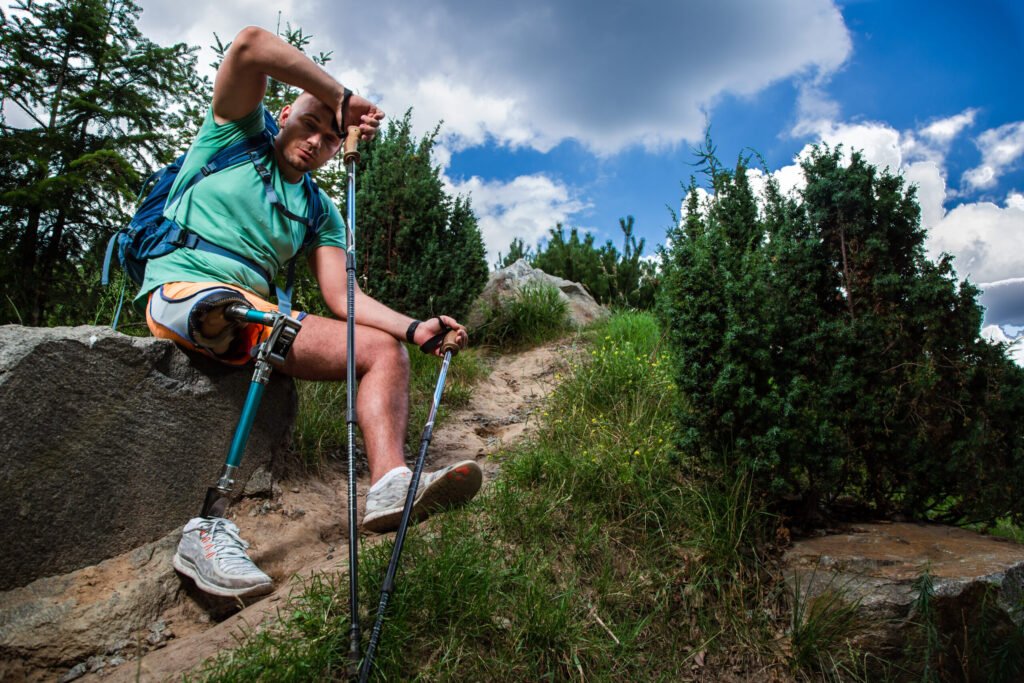
Researching Local Parks and Accessible Routes
Standard trail listings often miss crucial details. The Disabled Hikers website sets a new standard with 30 guides covering:
- Precise surface conditions
- Bench locations every 0.3-0.5 miles
- Alternative exit points
| Trail Feature | Standard Listings | Detailed Guides |
|---|---|---|
| Parking | Yes/No | Slope angle & van access |
| Surface Type | Paved/Dirt | Gravel size & compaction |
| Rest Areas | Occasional | Exact intervals & seating type |
Always call park offices before visiting. Rangers can share real-time updates on washed-out paths or closed facilities. Ask specific questions like “Are there curb cuts between the lot and trailhead?”
Build flexible itineraries with backup routes. Map apps help identify nearby alternatives if terrain proves challenging. Save energy by planning shorter loops that return to starting points.
Difficulty ratings often overlook individual needs. Create personal criteria based on factors like incline tolerance or sun exposure. Track successful outings to refine future plans.
Utilizing Technology and Community Resources
Innovative tech solutions now bridge critical gaps in nature exploration. What began as personal blogs have blossomed into powerful accessibility movements. Syren Nagakyrie transformed a personal blog into Disabled Hikers – now the nation’s premier disabled-led outdoor resource hub.
Leveraging Trail Guides and Online Platforms
Traditional trail maps often lack vital details. Disabled Hikers’ digital guides provide game-changing information like:
- Exact distances between rest benches
- Surface firmness ratings for mobility aids
- Photos of steep sections from ground level
| Resource | Standard Guides | Disabled-Led Guides |
|---|---|---|
| Path Width | Narrow/Wide | Inches measurement |
| Slope Info | Steep/Flat | Degree angles listed |
| Emergency Access | General warnings | GPS coordinates |
Mobile apps like AllTrails now integrate accessibility filters. Users sort trails by wheelchair-friendly surfaces or shaded rest areas. Social media communities enable real-time updates – hikers share photos of washed-out paths or new ramp installations.
Organizations like Wildability host virtual meetups for trip planning. These online platforms empower disabled people to explore confidently. As one adventurer notes: “Knowing exact trail conditions lets me conserve energy for enjoying nature, not worrying about surprises.”
Stories of Resilience and Empowerment in the Outdoors
Wilderness narratives gain new dimensions through disabled people reshaping outdoor culture. Their lived experiences expose untapped potential in nature connection, proving adventure thrives beyond traditional expectations.
Trailblazers Rewriting Outdoor Stories
Catarina Rivera navigates forests through touch and scent as a blind-deaf adventurer. “Pine resin textures tell me about tree health,” she explains. “Wind patterns through leaves become my trail markers.”
John and Anni Furniss experience coastlines through soundscapes. Wave rhythms help them gauge tidal changes, while seabird calls signal approaching weather systems. Their ocean excursions demonstrate how environments communicate through multiple senses.
Collective Action Changing Landscapes
Freya McGregor’s stationary birding practice sparked a movement. “I noticed more species by staying quiet,” she shares. Over 300 enthusiasts now participate in her community-led “Still Birding” events nationwide.
Joseph Saunders’ wheelchair-accessible photography workshops train others in adaptive techniques. Participants learn to stabilize cameras on mobility aids and use voice-activated shutters.
- Tatsuko Go Hollo’s recovery timeline documented through seasonal forest photography
- Trail accessibility petitions gaining 50,000+ signatures in 2023
- Disabled-led outdoor education programs in 14 states
These stories fuel systemic change by making inclusion visible. As Rivera states: “Our presence in wild spaces isn’t inspirational – it’s proof everyone deserves nature’s gifts.”
Optimizing Load and Gear for Enhanced Mobility
Smart packing strategies unlock nature’s wonders for adventurers managing physical challenges. Thoughtful load management transforms outdoor experiences from exhausting to empowering.
Reducing Pack Weight and Streamlining Essentials
Ultralight backpacking principles prove revolutionary. One explorer cut their 25-pound kit to 4.8 pounds using these methods:
- Replacing heavy tents with multi-use poncho shelters
- Choosing app-controlled stoves that eliminate fuel cans
- Sharing group gear through community supply networks
Compression sacks shrink medical supplies to palm-sized bundles. Collapsible water bladders adapt to changing hydration needs. These things demonstrate how minimalism enhances mobility.
Digital tools help maintain weight targets. Packing apps scan gear lists and suggest lighter alternatives. Some adventurers use kitchen scales to evaluate every item – even cutting toothbrush handles.
Proper load optimization lets explorers focus on trail joys rather than shoulder strain. As one adaptive hiker notes: “Carrying less means experiencing more.”
For more great articles, go here.

